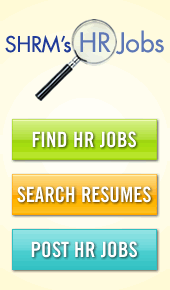There’s Both An “i” and a “u” in Inclusion

Have you ever relocated to a different part of the country? If so, you will likely notice what I like to call ‘regional differences’.
I have lived in the Northeast, Midwest, and the South. And while it’s unfair to generalize and paint everyone with the same broad brush, there are definite differences in how people speak (and I don’t mean accents) and interact and engage with you. Folks in the Northeast are quick and fast-paced, while the cadence is somewhat slower in the South. You’ll find people holding doors open for you in the Midwest and South (and expect you to do the same) and not so much in the Northeast.
People in the Midwest may make eye contact and say ‘hi’ to you as they pass by, while those in the South will always make eye contact and say ‘hey’ to you (unless, of course, they’re mad at you).
The State of the Workplace
Being a student of psychology, I notice these ‘regional differences’ in the workplace. Beginning with the interviewing process, it’s helpful to try to ‘flex’ and align one’s approach a bit so the out of area applicant will feel welcome and comfortable. If the person is hired and relocates here, meet with them and see how they’re faring. It’s definitely helpful if the transplant has friends or family in the area, and also ‘reaches out’ to others. By doing so, they can usually find some level and means of connection in their community. Fellow transplants can be more receptive to meeting new folks as they are (or were) also new themselves.
Recently, while doing some research for a talk I plan to give on employee retention, I learned that HR folks (OK, I’m guilty) and organizations who attempt to screen applicants for cultural fit may be wasting their time. Mark A. Stein and Lilith Christensen in ‘SuccessfulOnboarding‘ say “…while ‘hiring for fit’ is important, people are actually quite adaptable. What people share in common far exceeds the differences that divide them.” Those words got me thinking, as they’re not currently in vogue.
Our goal is to find ways to capitalize on these ‘shared commonalities’ and that’s where opportunities for inclusion comes in.
Today’s workplaces are different from those of the past. Not only might we employ people hailing from different parts of our state or country, but we’re starting to see five generations in our workplaces. And while on the surface these appear to be good things, disagreements and differences of opinion will arise in our mini melting pots – after all, we’re only human. When both people can candidly talk about any disagreement and commit to make some changes and ‘meet in the middle’, it usually results in a satisfactory resolution being reached.
Build Social and Emotional Connections
While organizations offer diversity & inclusion training to help raise employees’ awareness of their differences, the real benefits are realized when the many traits we have in common are identified and leveraged. And how does that happen? When work teams comprised of folks with different perspectives feel valued, appreciated, and included. These types of teams respectfully challenge each other and the status quo, are catalysts for change, and are the engines that move their organizations forward.
Remember, there’s both an “i” and a “u” in inclusion. Each of us should challenge ourselves to reach out and get to know someone who is different than ourselves. I’m confident that both you and the other person will be glad you did.
Good luck.
the HRMeister




